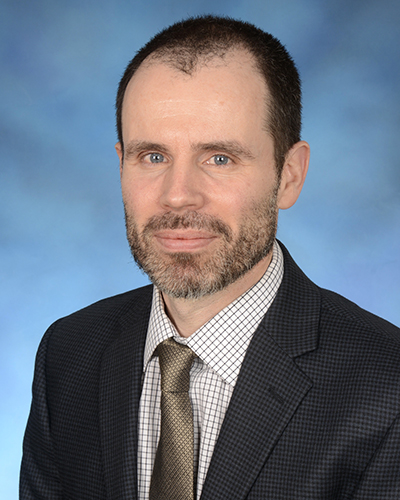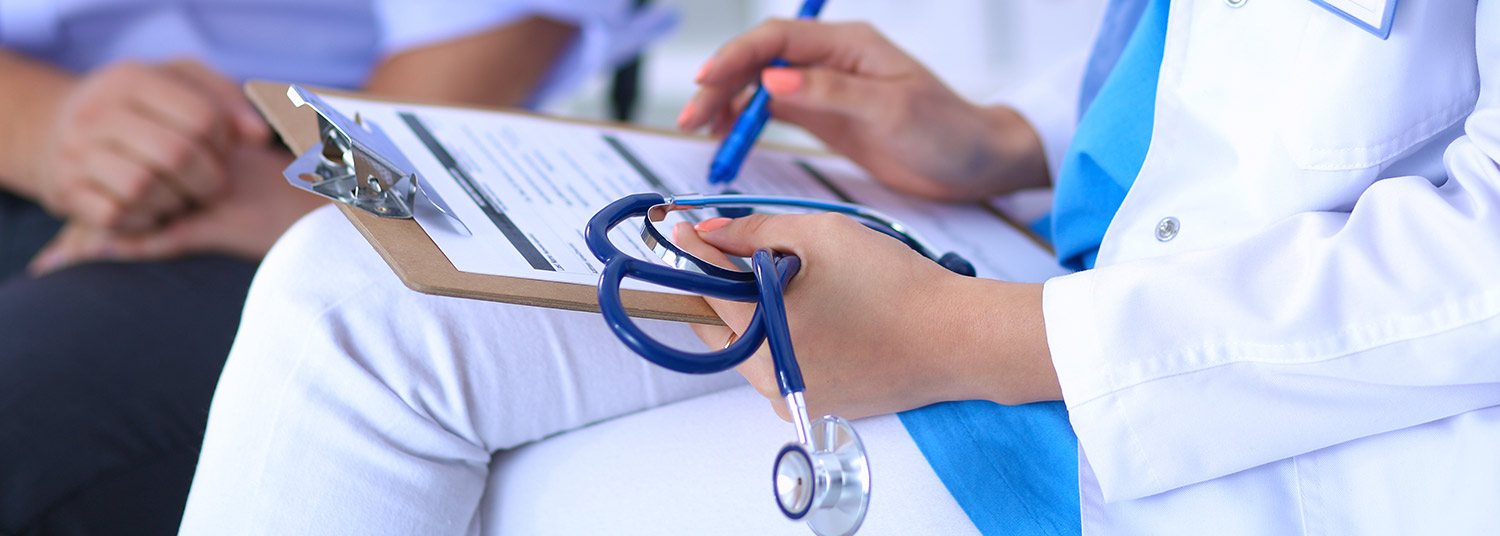May 04, 2021 | Deborah Kotz
Research Points to Need for Better Decision-Making Tools to Help Doctors Better Estimate Risk Based on Laboratory Findings

“A large gap exists between practitioner estimates and scientific estimates of the probability of disease,” said study leader Daniel Morgan, MD, a Professor of Epidemiology & Public Health at UMSOM. “Practitioners who overestimate the probability of disease might use that overestimation when deciding whether to initiate therapy, which could lead to the overuse of risky medications and procedures.”
To conduct the study, Dr. Morgan and his colleagues surveyed 553 primary health practitioners, including residents, attending physicians, nurse practitioners and physician assistants, in Maryland and seven other states. Survey respondents were asked to determine how well they could estimate the risk of four well-known health conditions based on hypothetical diagnostic scenarios. The researchers found, based on symptoms and test results, that health care providers significantly overestimated the likelihood of conditions. For example, health care providers, on average, estimated a 70 percent likelihood of cardiac ischemia in patients who had a positive finding on a stress test. In reality, based on evidence from medical studies, the real likelihood of cardiac ischemia is 2 to 11 percent.
The study also found that survey respondents estimated a 50 percent risk of breast cancer after a positive finding on a mammogram when evidence suggests 3 to 9 percent chance of breast cancer. They estimated an 80 percent likelihood of a urinary tract infection from a positive urine culture, and the vast majority of survey respondents said they would treat with antibiotics in these cases. The real risk of a UTI with a positive urine culture, however, is at most 8 percent.
“Solving this problem is not about asking health care providers to memorize numbers or practice math in order to improve their understanding of risks,” Dr. Morgan said. “We should, however, use probability and better utilization of decision-making tools to help them make better estimates.”
He developed a free tool called Testing Wisely, funded by the National Institutes of Health, that is designed to improve clinician understanding and ordering of diagnostic tests to make patient care safer. The site also includes a risk calculator to assess patients’ symptoms, exposure, and local positivity rates where they live to calculate their individual risk of having COVID-19.
“Informed medical decision-making is incredibly important, and physicians should have access to tools that make their job easier and improve patient safety,” said E. Albert Reece, MD, PhD, MBA, Executive Vice President for Medical Affairs, UM Baltimore, and the John Z. and Akiko K. Bowers Distinguished Professor and Dean, University of Maryland School of Medicine. "This study demonstrates the need for better decision-making tools to help healthcare providers provide the best possible care to their patients.”
About the University of Maryland School of Medicine
Now in its third century, the University of Maryland School of Medicine was chartered in 1807 as the first public medical school in the United States. It continues today as one of the fastest growing, top-tier biomedical research enterprises in the world -- with 46 academic departments, centers, institutes, and programs, and a faculty of more than 3,000 physicians, scientists, and allied health professionals, including members of the National Academy of Medicine and the National Academy of Sciences, and a distinguished two-time winner of the Albert E. Lasker Award in Medical Research. With an operating budget of more than $1.2 billion, the School of Medicine works closely in partnership with the University of Maryland Medical Center and Medical System to provide research-intensive, academic and clinically based care for nearly 2 million patients each year. The School of Medicine has nearly $600 million in extramural funding, with most of its academic departments highly ranked among all medical schools in the nation in research funding. As one of the seven professional schools that make up the University of Maryland, Baltimore campus, the School of Medicine has a total population of nearly 9,000 faculty and staff, including 2,500 students, trainees, residents, and fellows. The combined School of Medicine and Medical System (“University of Maryland Medicine”) has an annual budget of over $6 billion and an economic impact of nearly $20 billion on the state and local community. The School of Medicine, which ranks as the 8th highest among public medical schools in research productivity (according to the Association of American Medical Colleges profile) is an innovator in translational medicine, with 606 active patents and 52 start-up companies. In the latest U.S. News & World Report ranking of the Best Medical Schools, published in 2021, the UM School of Medicine is ranked #9 among the 92 public medical schools in the U.S., and in the top 15 percent (#27) of all 192 public and private U.S. medical schools. The School of Medicine works locally, nationally, and globally, with research and treatment facilities in 36 countries around the world. Visit medschool.umaryland.edu
Contact
Deborah Kotz
410-706-4255
dkotz@som.umaryland.edu

